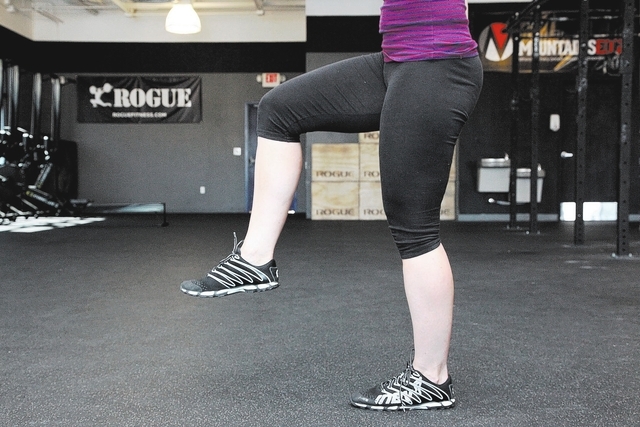Ready, steady, go … better balance takes practice

Balance and agility issues seem to plague many seniors I have trained over the years.
I’m not talking about walking a tightrope or running football drills. Many people still have trouble with those. What I mean is the simple ability to pick up an object without toppling over and finding yourself right there on the floor next to the object.
People ask me if training the legs on gym machines can help their balance. In short, yes it can but only to a point. Working on the machines is a good way to build strength, and that can transfer to better balance. But you will also need to perform some balance drills.
Let’s think of it this way: If I wanted to be a really good cook there are a few things I could do. I could watch hours upon hours of cooking television. I could buy really awesome ingredients and drop a small fortune in cookware and kitchen items. However, none of that really makes me a cook. I would benefit the best from getting in the kitchen and actually cooking.
Sure, I would make mistakes. I would burn things, drop things and make some dishes that really didn’t taste good. But after a while I would start to get the hang of it. I might even try to improvise my own recipes after a while.
The same works with balance. Just start. No fancy equipment needed. Just one foot in the air and the edge of a kitchen counter to hold onto. Today’s exercises can be done anywhere. They are essentially walking and hopping with a twist.
The trick to balance is alignment and core activation. Alignment of the body and its limbs is important. Structurally speaking, some positions are stabler than others. We need to resemble a well-built structure instead of a leaning tower full of pizza. Foot, ankle, knee, hip and spinal alignment all play crucial parts in effective balance. Make sure they are straight so you can teach your body to rely on its own structure when things get wobbly.
Core activation may seem like a thing that I always throw into these columns because it sounds good and gives me a few additional lines of text. But it really is important, especially for balance. Have you ever taken a sharp turn while driving and felt your core tighten to resist the G-force? That is your body trying to balance itself from what it perceives as a fall. You need your core to be actively engaged to assist you in balance.
The second exercise is a step beyond balance. Consider it an introduction to agility training. Why would anyone over a certain seasoned age want to add agility training to their routine you may ask? My answer would be to better prepare you for accidents. Grandkids running around can have some force if they aren’t looking where they’re going. Strong winds and deceptively high curbs can create the need for some fast moves to prevent a fall.
Not to fear, this agility drill is easy. It uses a simple cadence and requires no jumping. It does require an agility ladder. They resemble a rope ladder that you lay on the floor. If you or your gym has one, great! If not you can always use chalk on the driveway, or blue painter’s tape to make your own. Just make the squares about 12 inches large. I always favor the low-tech, low-price alternatives. If you have tiles in your house, you can use those as a makeshift agility ladder.
The goal of agility training is to teach your body correct patterning. Do you suppose prize fighters think about all the muscles they use when punching someone? No. They just punch. They train the patterning of the punch during workouts. This way when they need to punch, their brain knows what to do.
The same works for the agility ladder. It trains the body to know how to move in the different planes of motion so that when it becomes a necessity for you to move, the brain knows almost instinctively what to do. I think the most valuable part of today’s drill is the ability to move backward along the agility ladder. This will do wonders for your ability to catch yourself if you fall.
I coach people to think about the cadence. “Out, out, in, in.” Say it as you step through the agility ladder’s squares. It may seem like a simple drill at first, but it is easy to get turned around. After a few times you may not need to think about the cadence anymore, but will find that you instinctively move. With a little time and practice you will start to notice the benefits of the balance and agility training. You may even catch yourself from a potentially disastrous fall.
Chris Huth is a Las Vegas trainer. He can be reached at 702trainer@gmail.com. If you are a Las Vegas trainer and want to share your love of fitness as a guest coach, please contact him. Consult your physician before beginning any exercise program.